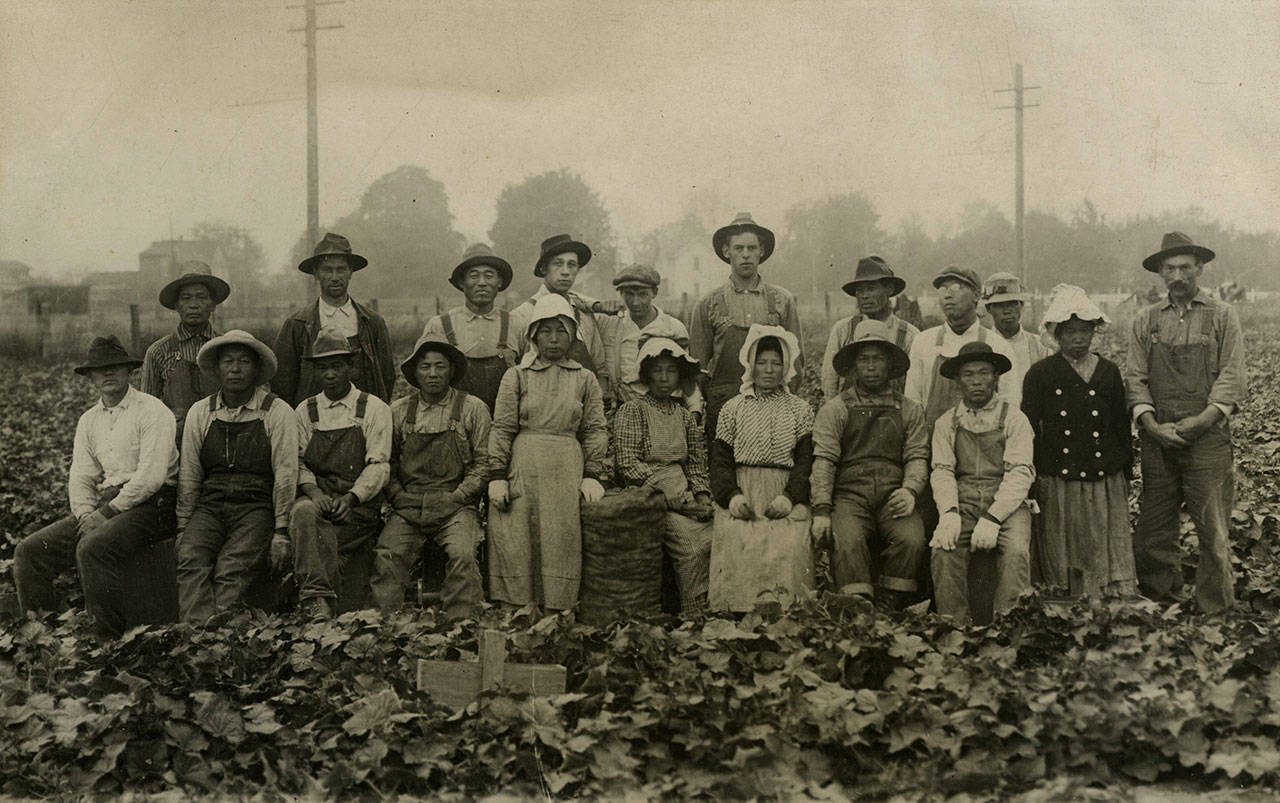By Bruce Haulman and Terry Donnelly
For The Beachcomber
Agriculture forms only a part of the larger story of Vashon-Maury Island, and yet the part played by agriculture is essential to understanding the story of the whole.
Agriculture on Vashon-Maury Island began early, perhaps as long as 3,500 years ago, and today still plays an important mythological role in the island’s process of self-identification. The history of agriculture on the island is divided into distinct phases, with each one focusing on different crops, methods, and markets.
The first agriculture on Vashon-Maury Island developed as early as 3,500 years ago as the riverine Marpole Culture evolved into the Coastal Salish Culture of the sx̌ʷəbabš People (pronounced schwa-bab-sh) who inhabited the island. Although largely dependent on the marine resources of the island, the sx̌ʷəbabš also cultivated the uplands of the islands using burning regimes to clear the land; maintaining swales for their horses, allowing root plants to flourish for harvesting, and encouraging the growth of berries.
This form of sustainable, low-impact agriculture, which had been practiced for millennia, ended abruptly in the 1850s when the Treaty Wars led to the exile and imprisonment of the sx̌ʷəbabš on Fox Island, and their relocation to the Puyallup Reservation in Tacoma. Vashon Island was part of the huge area ceded to the United States Government by the Treaty of Medicine Creek (She-nah-num) and was opened to homesteading by settlers.
The second stage of agriculture on the island emerged with the arrival of American settlers beginning in the 1860s and was dominated by small-scale logging and subsistence farming. This stage lasted for nearly 30 years and established the basic patterns for the settlement and development of the island. Because of the lack of developed roads, the farming and logging of this stage were largely limited to areas easily accessed by water. The primary development occurred around Quartermaster Harbor although many of the watersheds around the island were also logged. This early logging was critical to opening the island to agricultural development.
The third stage of island agriculture saw the emergence of large-scale industrial logging, the development of substantial greenhouse operations, and the expansion of farms specializing in diverse products like poultry, dairy, vegetables, and berries.
Japanese American strawberry farmers and the Mukai Barreling Plant were some of the backbones that supported this stage of island agriculture. Beginning in the 1890s, this stage of agriculture dominated the island economy until the agricultural depression of the 1920s, and the Great Depression of the 1930s led to an agricultural collapse and a decline in the island’s population. The Zarth Farm photograph is a good example of a family farm that prospered with crops like strawberries and hay. The Densho Archive photograph of migrant Japanese American and Euro-Americans berry pickers is a good example of the larger commercial farms that depended on itinerant workers to pick their crops.
World War II revived small-scale island agriculture, creating the fourth stage. The influx of wartime workers during the war, a new professional commuter population in the 1950s, and a back-to-the-earth counter-culture population in the 1960s and 70s reestablished the small farm on the island as either a part-time operation supported by outside income or a subsistence operation to support an alternative lifestyle. During this stage, the large commercial strawberry farms and the Beall Greenhouses disappeared, converted into you-pick farms, shifting totally away from farming, or relocating off-island. The last large commercial strawberry pick on the island was in 1985 at the Matsuda Farm, and the Beall Greenhouses began to relocate their operations in the 1970s and 1980s, and the property was sold in 1989.
Beginning in the 1980s and developing strength in the 1990s, the fifth stage of island agricultural history began with the establishment of sustainable agriculture farms, a revival of organic farming methods, and emerging markets for locally grown produce. The success of the Saturday Farmer’s Market and the changing demographics of the island sustained this re-emergence of small farms.
The current sixth stage of island agricultural history began in the early 2000s and has continued to grow and flourish to the present. Agriculture today is marked by three major forms of farming.
First, is the emergence of farm-to-table operations, led by Kurt Timmermeister and Kurtwood Farms, that are well marketed, professionally managed, and linked to both on-island and mainland markets. Second are the wineries, cideries, and brewing operations, initiated by Ron Irvine and Vashon Winery and quickly growing into a formidable number, that depend on off-island farms for much of what they use to produce their wines, ciders, and beers, but also utilize their own crops and the crops of other Island farmers.
The third is the emergence of the ubiquitous farm stands spurred on in part by the “buy local” movement. These farms vary in size and complexity, and they offer a wide range of seasonal crops, cheeses, milk, and berries to island residents. Some of these farms also have moved into subscription farming, suppling seasonal crops for a pre-paid amount. The success of these developments over the past 20 years bodes well the continued growth and expansion of new forms of Vashon agriculture.
— Bruce Haulman is an island historian. Terry Donnelly is an island photographer.


